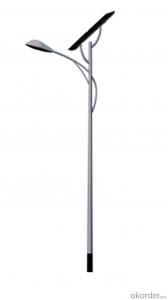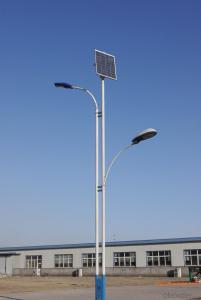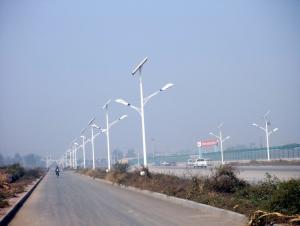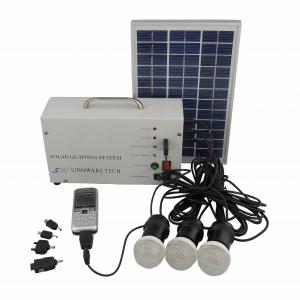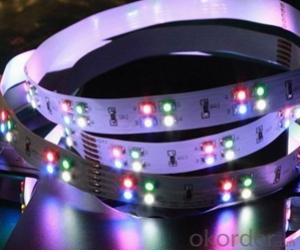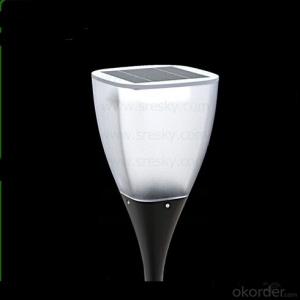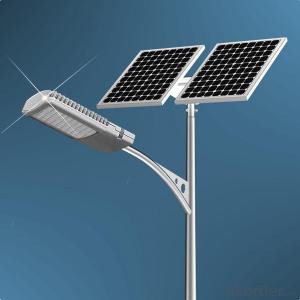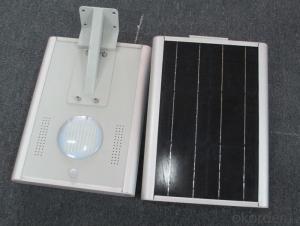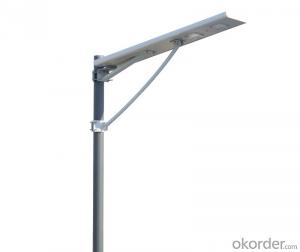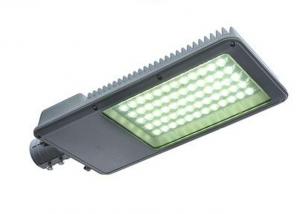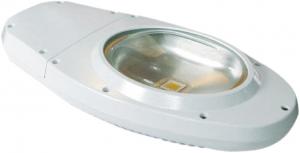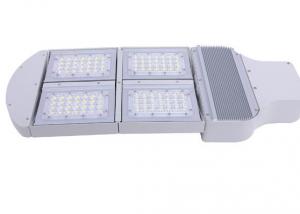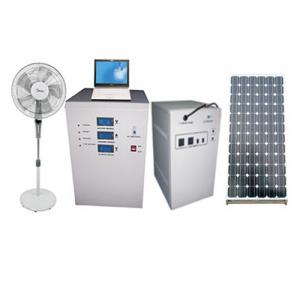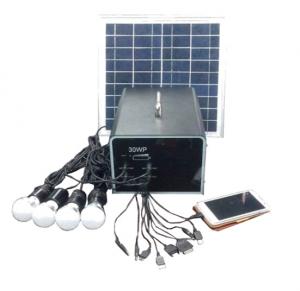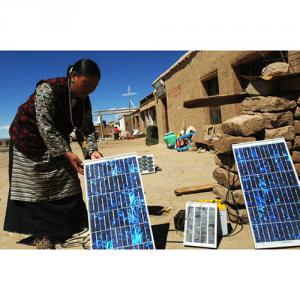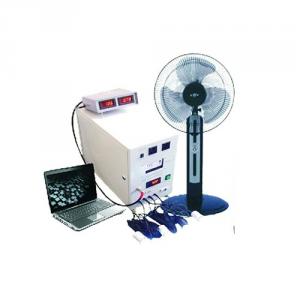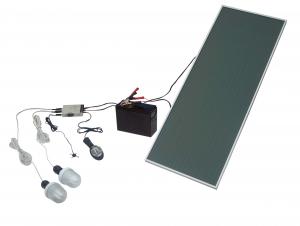Solar street light y2
- Loading Port:
- Ningbo
- Payment Terms:
- TT or LC
- Min Order Qty:
- 1 set
- Supply Capability:
- 5000 set/month
OKorder Service Pledge
OKorder Financial Service
You Might Also Like
1, Product desciption
Inverter circuits designed to produce a variable output voltage range are often used within motor speed controllers.
The DC power for the inverter section can be derived from a normal AC wall outlet or some other source. Control and feedback circuitry is used to adjust the final output of the inverter section which will ultimately determine the speed of the motor operating under its mechanical load.
Motor speed control needs are numerous and include things like: industrial motor driven equipment, electric vehicles, rail transport systems, and power tools. (See related: variable-frequency drive ) Switching states are developed for positive, negative and zero voltages as per the patterns given in the switching Table.
The generated gate pulses are given to each switch in accordance with the developed pattern and thus the output is obtained.
Solar power is energy from the sun. "Solar" is the Latin word for "sun" and
And Powerful source of energy. Without it, there will be no life.
Solar energy is considered as a serious source of energy for many years
of the vast amounts of energy that is made freely available, if harnessed by modern technology.
A magnifying glass can be used to heat up a small amount of water.
The short piece of copper tube is sealed at one end and filled with water.
And magnifying glass is then used to warm up the pipe.
Using more than one magnifying glass will increase the temperature more rapidly.
2, Features of the product
Inverters convert low frequency main AC power to higher frequency for use in induction heating.
To do this, AC power is first rectified to provide DC power. The inverter then changes the DC power to high frequency AC power. Due to the reduction in the number of DC Sources employed, the structure becomes more reliable and the output voltage has higher resolution due to an increase in the number of steps so that the reference sinusoidal voltage can be better achieved.
This configuration has recently become very popular in AC power supply and adjustable speed drive applications. This new inverter can avoid extra clamping diodes or voltage balancing capacitors. There are three kinds of level shifted modulation techniques, namely:
The first thing to figure out is the length of road in need of street lights.
This can be a small entrance road only a couple hundred of feet long to miles of streets through an area. Does the area currently have any type of lighting available.
What is the reason for needing street lights in this area
Is the electrical grid already nearby or would you need to call in the power company to bring in electrical lines.
If the electric needs to be brought to the area, how much is this going to cost? Depending on how far the grid electric is from the location of the needed lighting, this can be quite expensive.
How much lighting is needed on the street? Do the lights need to be dark sky compliant.
Do the street lights need to run from dusk to dawn or for only a specified number of hours at night.
Are the street lights able to dim in the middle of the night and still provide enough lighting.
These questions need to be answered before you can decide on how many lights you will need to complete the project.
3, Detailed Specification
| ||||||||||||||||||||||||||||||||||||||||||||||||
4, Product Image

- Q:How do solar lights handle power surges?
- Solar lights typically have built-in circuitry that helps protect them from power surges. When a power surge occurs, the circuitry detects the sudden increase in voltage and acts as a buffer to prevent the surge from damaging the internal components of the light. This circuitry may include surge protectors, voltage regulators, and other protective measures. Additionally, solar lights often have a built-in battery or capacitor that helps stabilize the power supply and absorb any excess energy during a power surge. This helps to ensure that the solar light continues to function properly and avoids any potential damage.
- Q:Can solar lights be used for illuminating outdoor stairways?
- Yes, solar lights can be used for illuminating outdoor stairways. They are a convenient and energy-efficient option as they harness sunlight to charge their batteries during the day, and then automatically turn on at night to provide illumination for outdoor spaces, including stairways.
- Q:Can solar lights be used for boat docks?
- Yes, solar lights can be used for boat docks. Solar lights are a great option for boat docks as they do not require any wiring or electricity, making them easy to install and maintain. They use sunlight to charge their batteries during the day and automatically turn on at night, providing illumination for the dock area. Additionally, solar lights are energy-efficient and environmentally friendly, making them a popular choice for boat docks.
- Q:Can solar lights be used in remote areas?
- Yes, solar lights can definitely be used in remote areas. In fact, they are particularly well-suited for remote areas where access to electricity is limited or non-existent. Solar lights rely on the energy from the sun to charge their batteries during the day, and they can then provide light during the night. This makes them highly adaptable and perfect for areas that are not connected to the electrical grid. One of the key advantages of solar lights in remote areas is their independence from traditional power sources. This means that people living in remote areas can have access to lighting without the need for expensive infrastructure or ongoing electricity costs. Solar lights are also easy to install and require minimal maintenance, making them a practical and cost-effective solution for remote areas. Moreover, solar lights can greatly benefit remote areas in terms of safety and security. They can be used to light up streets, pathways, and public spaces, making them safer to navigate at night. In addition, solar lights can be utilized for homes, schools, and health clinics in remote areas, ensuring that basic lighting needs are met and improving the overall quality of life for residents. Furthermore, solar lights are environmentally friendly, as they do not produce harmful emissions or rely on fossil fuels. They are a sustainable and renewable energy source, utilizing the abundant sunlight available in remote areas. This not only reduces carbon footprints but also helps to preserve the natural environment. Overall, solar lights are a practical, cost-effective, and sustainable solution for lighting in remote areas. They provide access to lighting where traditional electricity is not available and contribute to improved safety, security, and quality of life for people living in these areas.
- Q:Are there solar lights with different color options?
- Certainly! Different color options for solar lights are indeed available. Many manufacturers offer solar lights that come with color-changing capabilities, enabling you to enjoy a wide range of colors in your outdoor space. These lights typically feature multiple LED bulbs that can cycle through various colors or remain on a color of your preference. Moreover, there are solar lights available in specific colors like white, warm white, blue, green, red, and yellow, allowing you to personalize the ambiance of your outdoor area. Whether you desire to create a festive atmosphere or simply add a splash of color to your garden, there are numerous options to select from when it comes to solar lights with different color choices.
- Q:What is the recommended height for installing solar lights?
- The height at which solar lights should be installed varies depending on their purpose and location. It is crucial for their efficient operation that solar lights are installed at a height that allows for maximum exposure to sunlight. For pathway or garden lights, it is often recommended to install them around 18-24 inches off the ground. This height ensures proper illumination while preventing any obstruction. On the other hand, for security or floodlights, a higher installation height of 8-10 feet may be more appropriate. This elevated height provides broader coverage and greater visibility. When determining the most suitable height for installing solar lights, it is important to consider the specific needs and desired outcomes.
- Q:How do solar lights handle radio frequency interference?
- Solar lights are not typically designed to combat radio frequency interference (RFI), so they do not directly handle it. However, due to their design and nature, solar lights are generally not prone to RFI. The operation of solar lights involves the use of photovoltaic cells, which convert sunlight into electricity. They are powered by solar panels that absorb sunlight during the day and store the energy in rechargeable batteries. This means that solar lights do not rely on external power sources or electrical connections, reducing the chances of RFI. RFI can occur when various electronic devices emit electromagnetic waves that interfere with radio signals. In the case of solar lights, they do not have internal electronics or electrical components that produce electromagnetic radiation, making it less likely for them to emit interference that disrupts radio frequencies. However, it is important to note that solar lights may still be affected by external RFI sources if they are positioned near devices that emit strong radio signals. For instance, if a solar light is placed close to a powerful radio transmitter or other electronic equipment, there is a possibility of interference. In such instances, the interference can potentially affect the performance of the solar light, causing flickering, inconsistent operation, or even complete failure. Nonetheless, this occurrence is relatively uncommon and depends on specific circumstances and the strength of the interfering radio signals. To minimize the risk of interference, it is advisable to install solar lights away from strong RFI sources and ensure proper shielding if necessary. Additionally, choosing high-quality solar lights from reputable manufacturers is important, as they are more likely to have undergone testing and incorporated measures to reduce the risk of RFI.
- Q:Can solar lights be used to power other devices?
- Indeed, solar lights have the capability to provide power for other gadgets. Numerous solar lights are equipped with USB ports or integrated outlets, enabling you to charge or operate various devices like smartphones, tablets, or even small appliances. These solar lights typically possess a built-in battery that stores the energy derived from sunlight throughout the day. Consequently, this stored energy can be utilized to power other devices either during the night or whenever the need arises. Furthermore, portable solar panels are also available, which can be connected to solar lights or other gadgets, offering an independent power source for charging or operating them. Hence, whether the objective is to charge your phone or operate small electronic devices, solar lights are undeniably capable of serving as a power source.
- Q:How can I increase the brightness of my solar lights?
- There are a few ways to increase the brightness of your solar lights. First, make sure the solar panels are receiving direct sunlight for at least 6-8 hours a day to maximize their charging capacity. Additionally, you can clean the solar panels regularly as dust and dirt can reduce their efficiency. If your solar lights have replaceable batteries, consider upgrading to higher-capacity rechargeable batteries for brighter illumination. Lastly, check if your lights have adjustable settings, such as a switch to increase the brightness level.
- Q:Can solar lights be used for outdoor recreational areas?
- Yes, solar lights can be used for outdoor recreational areas. Solar lights are an excellent choice for outdoor lighting in recreational areas because they are easy to install, cost-effective, and environmentally friendly. They do not require any electrical wiring or access to a power source, making them ideal for remote or off-grid locations. Solar lights harness energy from the sun during the day and use it to power the lights at night, providing a sustainable and renewable lighting solution. Additionally, solar lights come in a variety of designs and styles, including path lights, floodlights, and string lights, allowing for versatile and customizable lighting options for outdoor recreational areas. Whether it is a park, campground, sports field, or backyard, solar lights can enhance the ambiance and safety of these spaces while minimizing energy consumption and reducing carbon footprint.
1. Manufacturer Overview |
|
|---|---|
| Location | |
| Year Established | |
| Annual Output Value | |
| Main Markets | |
| Company Certifications | |
2. Manufacturer Certificates |
|
|---|---|
| a) Certification Name | |
| Range | |
| Reference | |
| Validity Period | |
3. Manufacturer Capability |
|
|---|---|
| a)Trade Capacity | |
| Nearest Port | |
| Export Percentage | |
| No.of Employees in Trade Department | |
| Language Spoken: | |
| b)Factory Information | |
| Factory Size: | |
| No. of Production Lines | |
| Contract Manufacturing | |
| Product Price Range | |
Send your message to us
Solar street light y2
- Loading Port:
- Ningbo
- Payment Terms:
- TT or LC
- Min Order Qty:
- 1 set
- Supply Capability:
- 5000 set/month
OKorder Service Pledge
OKorder Financial Service
Similar products
New products
Hot products
Related keywords

